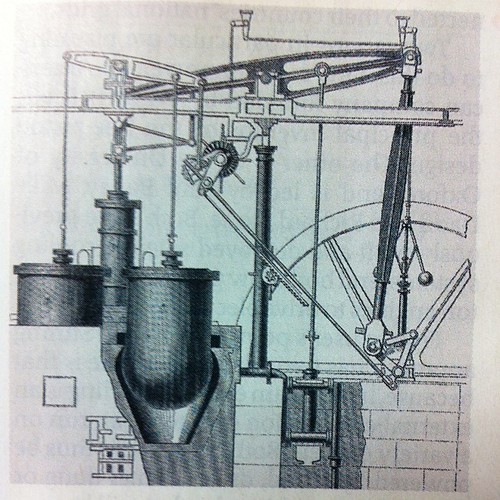
#sterlingheatengine,
Instead of a messy process of using steam to make a vacuum beneath a piston, thus causing atmospheric pressure to drive the piston down, Stirling's version (illustrated above) uses the heating and cooling (and thus expansion and contraction) of gas sealed inside the engine to do the piston-driving. [Thus it's being called the free-piston engine.] (The Economist November 30th 2013.)
The Stirling engine is named after the inventor and clergyman, Robert Stirling. He patented the device in 1816, about 200 year old.
One version of the Stirling engine is a free-piston engine but runs backwards as a refrigerator. It uses mechanical energy as the input (rather than the output) to pump heat away from where it is not wanted. These specialized fridges chill the infra-red sensors on orbiting telescopes.
Engineers want to bring free-piston engines to replace Rudolf Diesel's smelly, polluting motors in generators that provide electric power to the tropical villages not yet connected to the grid.
Advantage one: like a steam engine, a Stirling is an external-combustion engine, it can run on a variety of fuels. It can be powered by wood, dried animal dung or anything else that will burn.
Advantage two: free-piston engine suffers little wear and tear, so it should be able to run for decade without servicing.
No comments:
Post a Comment